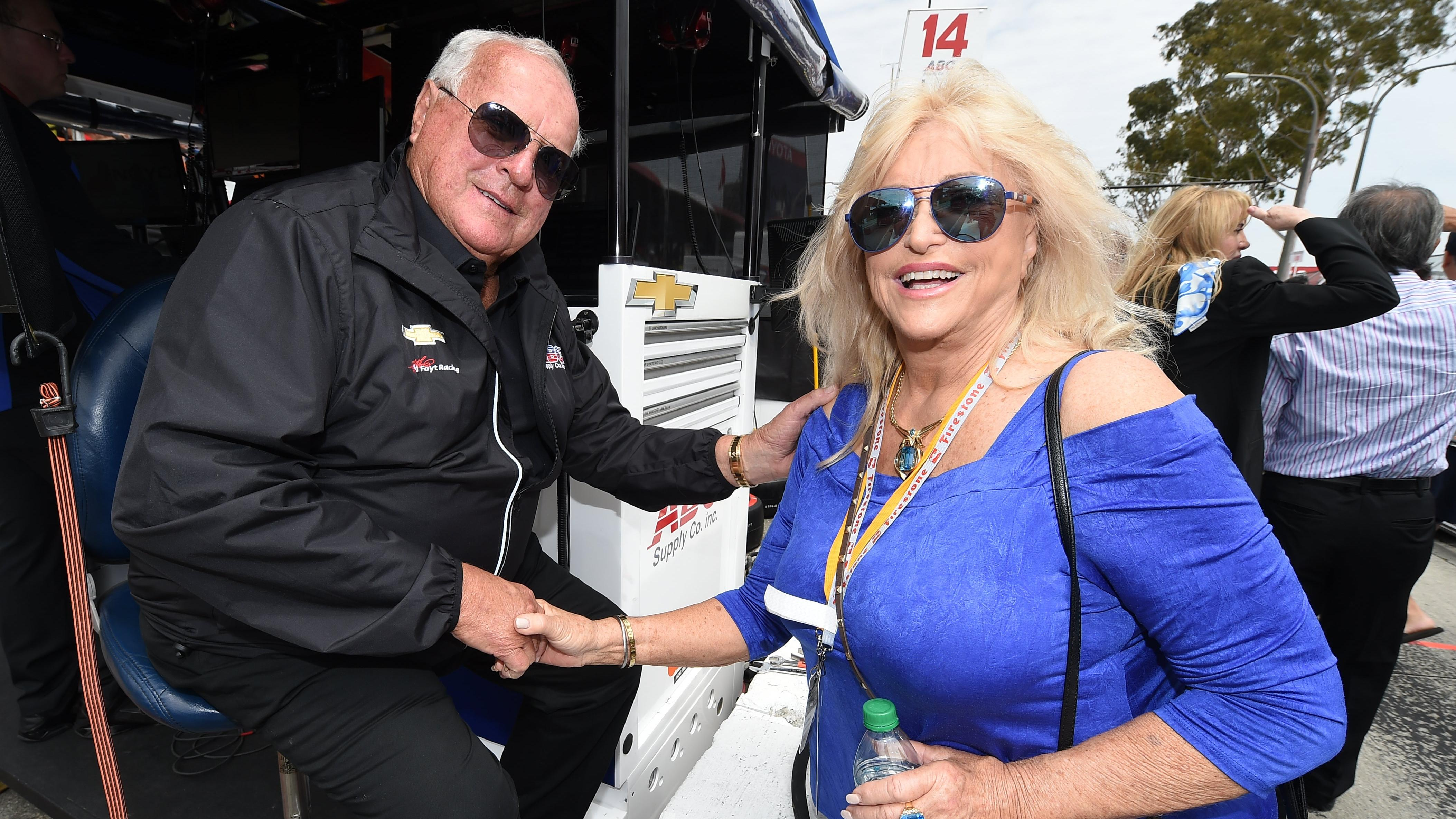Linda Vaughn And The Ongoing Concerns About Grid Girls
Vaughn's personality was just as important as her good looks.
Linda Vaughn is an icon of American motorsport. The Georgia-born beauty used her good looks and charm to become a force of marketing and a familiar face in the NASCAR, IndyCar, and NHRA paddocks. People still line up for hours just to get her autograph, such is the power of her character. And I think it's time to work through a question that has been posed to me several times over the last few years: How is Vaughn different from the grid girls that are much maligned in the modern era?
I just wrapped up Vaughn's autobiography, Linda Vaughn: The First Lady of Motorsports, which is a great, photo-filled read for anyone who wants to know a little bit more about Miss Hurst Golden Shifter, the so-called First Lady of Motorsports and original promo girl, and where she comes from... but only so much. The 200-plus pages let photos and captions tell the story far more than Vaughn's exposition, so while you do learn some things — that she grew up with a single mother and convinced her teenage boyfriend to teach her how to drive — you're not going to have a tell-all exposé or a play-by-play of her life. This is Vaughn's way to share what she's ready to share and to stun you with beautiful photos along the way.
And it's jam-packed with incredible stories. Whether she's telling off A. J. Foyt for being rude to Jim Clark or advising Shirley Muldowney to be a little bit softer in front of her fans, Vaughn epitomizes a person who carried herself with charm, grace, and empathy, who knew she was there to do a job but who also took it upon herself to adopt the whole racing world as members of her family along the way.
She did it, though, by flaunting what she'd call her "God-given assets" in form-fitting outfits and miniskirts.
In many ways, Vaughn was the original "grid girl," though I think she might balk at the name. Yes, she was attending races and auto shows to use her good looks to sell a product — but I think what differentiates her from the nameless women that used to hold grid position signs for Formula One drivers is the fact that it was, predominantly, her personality that did the heavy lifting. She caught your eye with her bouffant hair and sequined dresses, sure, but she reeled you in with a stunning memory that would never forget your face, your name, or to ask about how your family is doing. You'd buy a Hurst shifter, not because you thought Vaughn was pretty, but because she made you feel like a friend.
Vaughn paved the way when it came to blending modeling and marketing in motorsport. Hurst encouraged her to make her own decisions, and as she states multiple times, she wanted to do it in a classy, family-friendly way. Vaughn rarely wore an outfit that her mother didn't make for her, and if mom didn't approve of it, she didn't wear it. She took pride in her body and her flirtatious nature, but she drew hard lines when it came to how she was treated; there's many a story in her book about shutting handsy men down, either verbally or physically. She had presence, she was known, and she commanded respect.
I've long been against the concept of grid girls or promo girls. It doesn't sit well with me that we use the female body as a tool to sell something, and I've argued many times that it reinforces the negative perceptions of women in motorsport. At the same time, I don't think the specific grid girls themselves are wrong for choosing it as part of their job, because who wouldn't want to have that experience? It's long been a personal battle of understanding for me, and while I generally fall on the side of "we don't need boobs to make people care about racing," I also worry that it's not just some internalized misogyny flaring up.
But reading Vaughn's book clarified a lot of things for me, because I think she would agree with where I'm coming from. When Linda Vaughn came on the auto show scene, most of the women that worked those events were nameless, often-nude bodies that posed with the cars and nothing more. She, however, looked at her job of Miss Hurst Golden Shifter as a workplace in which she wanted to be respected. So, she took her title and endowed it with fun, family-friendly costumes and reams of personality. If people were going to come ogle her, they were going to do it politely, they were going to learn something about cars or racing, and they were going to have a good conversation in the meantime.
For Vaughn, it was her life and not just a one-off gig, so she made a very concerted effort to establish herself as a well-respected figure in the community. She was a person. And that, I think, is where my issue with most grid girls rests: we've gone back to stripping those women of names or personalities, which turns them back into objects or marketing tools, not career women who market products.
That's such a big difference. You're more likely to respect someone or, at the very least, think twice before disrespecting them if you know their name and are familiar with the way they conduct themselves — even if you don't like that person. If you know you're never going to see this person again outside of this context, then what's stopping you from being shitty toward them?
If you haven't read Linda Vaughn: The First Lady of Motorsports, go out and buy it right now. It's a worthwhile purchase just to bask in the beautiful photos and to learn about a side of racing that isn't as obvious as the competition itself.
